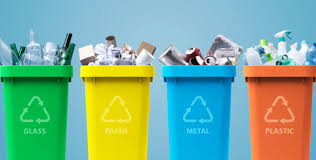California has long been at the forefront of environmental initiatives, and one area where the state is making great strides is in the field of advanced recycling. As the state continues to strive for energy sustainability and reduce its carbon footprint, advanced recycling methods are playing a key role in achieving these goals.
What Is Advanced Recycling?
Advanced recycling, also known as chemical recycling or molecular recycling, is a process that breaks down plastic waste into its molecular building blocks, which can then be used to create new plastic products. Unlike traditional mechanical recycling, which limits the types of plastics that can be recycled and degrades the quality of the plastic over time, advanced recycling offers a more efficient and effective way to recycle a broader range of plastics.
The Benefits of Advanced Recycling
There are several key benefits to advanced recycling that make it a valuable tool in California’s quest for energy sustainability:
1. Increased Recycling Rates: Advanced recycling has the potential to recycle plastics that are currently not accepted by traditional recycling programs, such as multilayer packaging and plastic films. This can help increase overall recycling rates and reduce the amount of plastic waste that ends up in landfills.
2. Energy Efficiency: Advanced recycling processes require less energy than the production of virgin plastic, making them a more sustainable option for creating new plastic products. By using recycled plastic as feedstock, manufacturers can reduce their carbon footprint and decrease their reliance on fossil fuels.
3. Circular Economy: Advanced recycling supports a circular economy model, where materials are continuously recycled and reused rather than being disposed of after a single use. This helps reduce the demand for new resources and minimizes the environmental impact of plastic production and disposal.
4. Reduction of Greenhouse Gas Emissions: By diverting plastic waste from landfills and reducing the need for new plastic production, advanced recycling helps lower greenhouse gas emissions associated with the plastic lifecycle. This can have a positive impact on California’s overall carbon footprint and contribute to the state’s renewable energy goals.
California’s Leadership in Advanced Recycling
California has been a leader in promoting advanced recycling technologies and incorporating them into its waste management strategies. The state’s commitment to sustainability and environmental stewardship has led to the development of innovative programs and policies that support the growth of advanced recycling industry.
For example, the state’s SB 1334 legislation aims to increase the recycling of single-use plastic packaging and products by implementing extended producer responsibility programs and promoting the use of advanced recycling technologies. By incentivizing the adoption of advanced recycling methods, California is paving the way for a more sustainable and circular economy.
In addition to legislative support, California is also home to several advanced recycling facilities that are pioneering new technologies and processes for converting plastic waste into valuable resources. These facilities play a crucial role in diverting plastic waste from landfills, reducing greenhouse gas emissions, and promoting a more sustainable approach to plastic recycling.
Looking Ahead
As California continues to prioritize energy sustainability and environmental protection, advanced recycling will play an increasingly important role in achieving these goals. By investing in advanced recycling technologies, supporting innovative research and development, and implementing policies that promote recycling and circular economy principles, California can lead the way in building a more sustainable and resilient economy for future generations.
With the adoption of advanced recycling methods, California has the opportunity to reduce its carbon footprint, conserve natural resources, and create a more sustainable future for all. By embracing these innovative technologies and practices, the state can set an example for the rest of the country and the world to follow in the transition to a more circular and sustainable economy.

